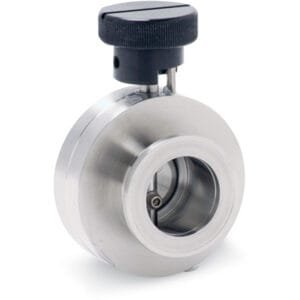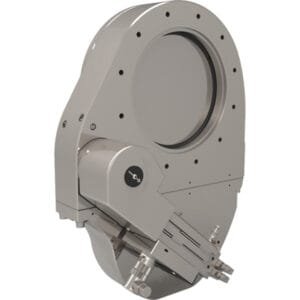KF (QF) HV 5-Way Crosses: A Versatile Solution for High Vacuum Applications
In the world of vacuum technology, adaptability and precision are key to system performance. KF (QF) HV 5-Way Crosses serve as indispensable components for engineers and researchers who need to create complex vacuum setups while maintaining high reliability and leak-tight integrity. These fittings are specifically designed to conform to the ISO-KF standard, commonly used in high and medium vacuum systems.
What Are KF (QF) HV 5-Way Crosses?
A 5-way cross features five ports arranged orthogonally—typically one central inlet/outlet with four ports branching out perpendicularly. This configuration allows users to connect multiple vacuum lines or instruments to a single junction, making the 5-way cross an excellent choice for labs, research facilities, and industrial environments where space and accessibility are at a premium.
Materials and Construction
These vacuum crosses are generally constructed from high-quality stainless steel (such as 304 or 316L) or corrosion-resistant aluminum, depending on the application’s thermal and chemical demands. Stainless steel offers durability, strength, and low outgassing, while aluminum provides a lightweight, cost-effective alternative with good thermal conductivity.
Features and Benefits
Multi-Directional Access: Five flanged ports allow for the integration of multiple devices, such as pressure gauges, viewports, feedthroughs, or additional vacuum lines.
Standard KF Flanges: Quick and easy connections using clamps and centering rings with O-rings ensure fast assembly and maintenance.
Leak-Tight Design: Precision manufacturing ensures vacuum integrity, which is essential in high-vacuum systems.
Modularity: Supports reconfiguration of setups without welding or major disassembly.
Typical Applications
Research Laboratories: Ideal for experimental setups that require the flexibility to modify vacuum pathways or add new instruments on the fly.
Semiconductor Industry: Used in wafer processing systems that demand clean, controlled vacuum environments.
Vacuum Coating and Deposition Systems: Helps route gas or plasma sources to various chambers or tools.
Analytical Instruments: Supports connections for mass spectrometers, residual gas analyzers, and ion pumps.
Compatibility
KF (QF) HV 5-Way Crosses are compatible with a wide range of vacuum accessories that use the same flange standard. From valves and baffles to bellows and traps, these crosses serve as centralized nodes for system expansion.
Final Thoughts
When building or expanding a high-vacuum system, flexibility and reliability are paramount. KF (QF) HV 5-Way Crosses from trusted manufacturers offer a smart, modular solution that supports dynamic configurations without compromising vacuum performance. Whether you’re operating in a high-precision lab or an industrial setting, integrating a 5-way cross can streamline your setup and future-proof your system against evolving needs.
Ordering Table
Accessories Table
| Description | For | Per Package | Part Number |
| Cast Clamps (SS) | KF10, KF16 Flanges | 1 | QF16-075-CS |
| Cast Clamps (SS) | KF25 Flanges | 1 | QF25-100-CS |
| Cast Clamps (SS) | KF40 Flanges | 1 | QF40-150-CS |
| Cast Clamps (SS) | KF50 Flanges | 1 | QF50-200-CS |
| Cast Clamps (Aluminum) | KF10, KF16 Flanges | 1 | QF16-075-C |
| Cast Clamps (Aluminum) | KF25 Flanges | 1 | QF25-100-C |
| Cast Clamps (Aluminum) | KF40 Flanges | 1 | QF40-150-C |
| Cast Clamps (Aluminum) | KF50 Flanges | 1 | QF50-200-C |
| Lever Clamps (Aluminum) | KF10, KF16 Flanges | 1 | QF16-075-CHA |
| Lever Clamps (Aluminum) | KF25 Flanges | 1 | QF25-100-CHA |
| Lever Clamps (Aluminum) | KF40 Flanges | 1 | QF40-150-CHA |
| Centering Ring (SS with Fluorocarbon O-Ring) | KF10 Flanges | 1 | QF10-050-SRV |
| Centering Ring (SS with Fluorocarbon O-Ring) | KF16 Flanges | 1 | QF16-075-SRV |
| Centering Ring (SS with Fluorocarbon O-Ring) | KF25 Flanges | 1 | QF25-100-SRV |
| Centering Ring (SS with Fluorocarbon O-Ring) | KF40 Flanges | 1 | QF40-150-SRV |
| Centering Ring (SS with Fluorocarbon O-Ring) | KF50 Flanges | 1 | QF50-200-SRV |





Reviews
There are no reviews yet.